CIMMYT and China join forces to tackle wheat disease in Africa
While wheat acreage has been increasing across the whole of Africa, the sub-Saharan countries account for a significant proportion of the total growth and yield, equaling an area of approximately 3.1 million hectares and a production of more than 9 million tons. However, in recent years, Fusarium head blight (FHB) or head scab has become a major disease in the region, causing significant reductions in yield and quality due to the lack of resistant varieties and management tools.
In China, a successful wheat shuttle breeding program by the Chinese Academy of Agricultural Sciences (CAAS) and CIMMYT for improving FHB has existed since the 1980s. Additionally, CIMMYT and the Jiangsu Academy of Agricultural Sciences (JAAS) have provided an FHB screening station in Nanjing since 2019. With a wealth of experience in confronting the disease, this ongoing partnership can help to solve the challenges currently faced by farmers in Africa.
To this end, CAAS, JAAS, and CIMMYT organized a training workshop on FHB management for Africa, which took place with financial support from China Aid in Beijing and Nanjing, China, between 10 and 23 April 2024. Twenty participants, 45% of which were women, attended the workshop, with specialists in wheat breeding, pathology, seed quarantine, and other related fields at public institutions in Ethiopia, Zambia, and Lesotho.
“This is the first time China has worked with an international organization to conduct an agricultural training workshop for sub-Saharan Africa,” said Zhonghu He, CIMMYT distinguished scientist and country liaison officer in China.

Practical tools to target FHB
Experts from China and CIMMYT shared their successful experiences of FHB management, including breeding resistant varieties. The trainees benefitted from hands-on experience of FHB identification, disease screening (including inoculum preparation, inoculation, and scoring), mycotoxin quantification techniques, and wheat breeding.
At the end of the workshop, the participants were extremely pleased to observe the impressive progress made in China on wheat FHB both on breeding and disease control, and they expressed strong willingness to contribute to collaboration between Africa, China, and CIMMYT on more wheat breeding and research. Netsanet Bacha Hei from the Ethiopian Institute of Agricultural Research (EIAR) was impressed with the scientific and technical expertise provided in the training and mentioned that sub-Saharan Africa needs similar practical trainings to mitigate the threat of FHB. Similar opinions were echoed by Doreen Malekano Chomba from the Zambian Plant Quarantine and Phytosanitary Service (PQPS), who discussed the need to have an effective in-country surveillance and monitoring to assess and manage FHB in the region.
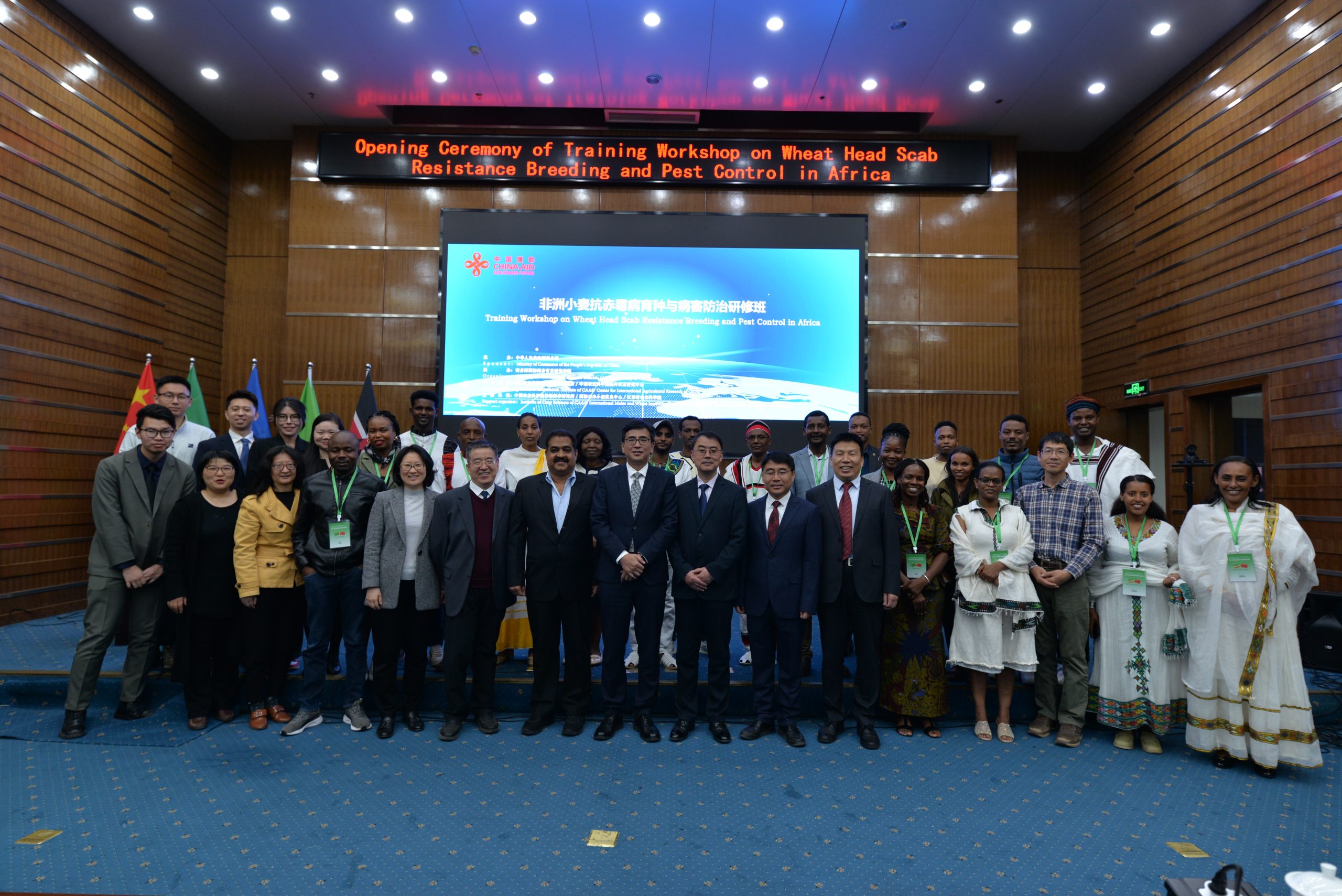
Xu Zhang, who heads the FHB research program at JAAS, is very appreciative of the collaborative work that has been going on for several decades between CIMMYT and China, highlighting that the workshop represents another step in understanding and managing FHB in sub-Saharan Africa and beyond, Zhang said, JAAS and CIMMYT has grown together through strong partnership.
“This training lays firm groundwork for future China-Africa-CIMMYT collaboration on mitigating the threat of FHB and improving wheat production and food security in sub-Saharan African countries,” said He.
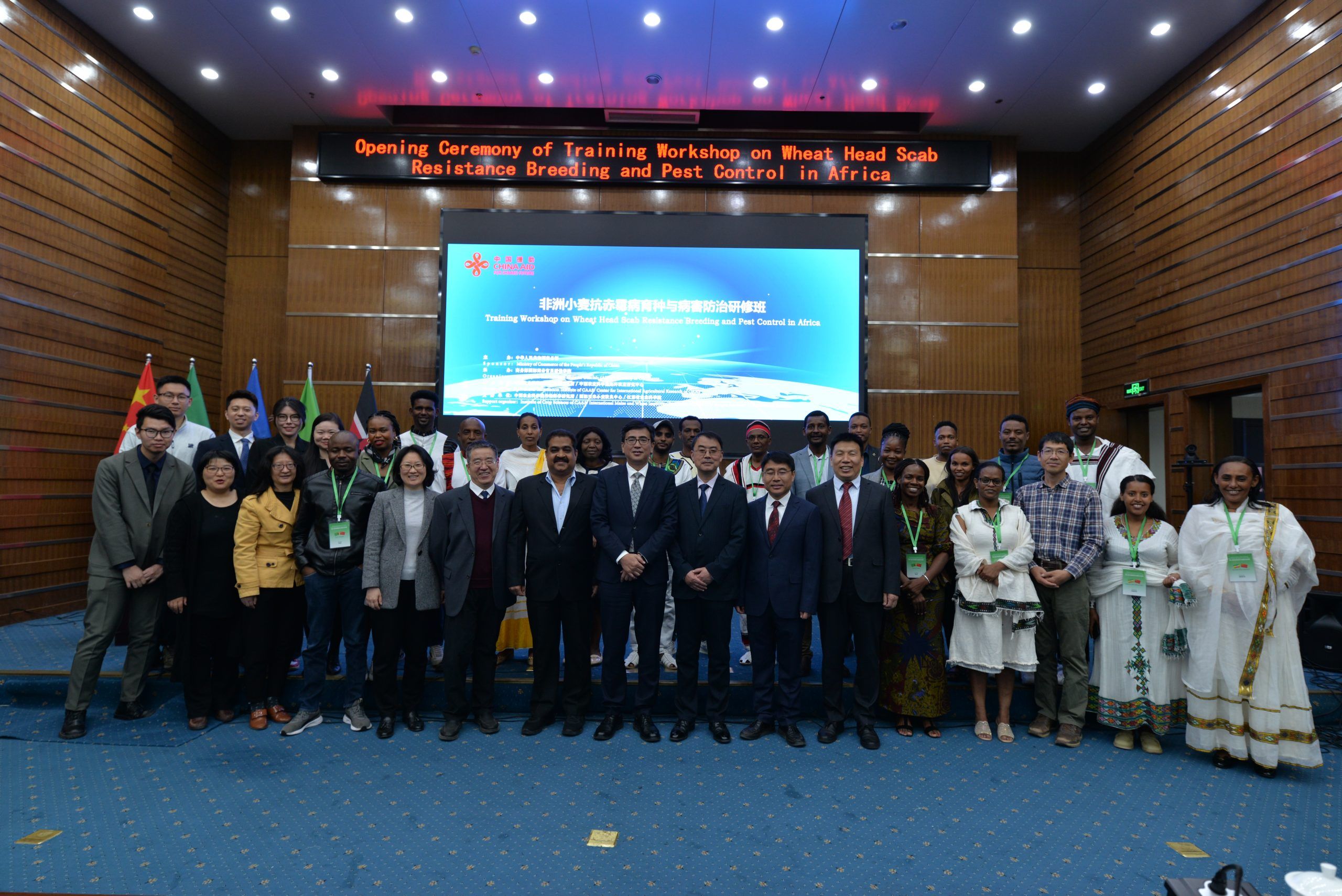


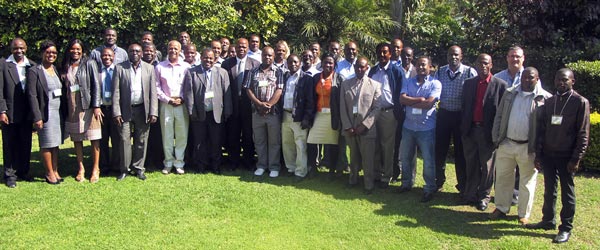
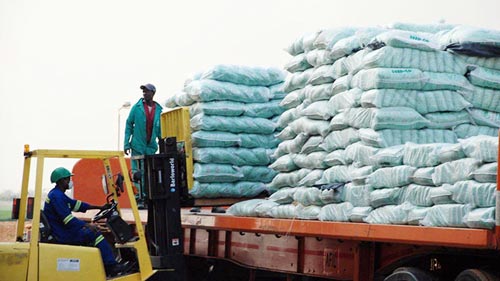 To achieve food security, smallholder farmers in Southern Africa require access to improved seed and inputs for higher yields. “Seed is one of the key movers in agricultural development,” says John MacRobert, New Seed Initiative for Maize in Southern Africa (NSIMA) leader, indicating the importance of going beyond developing improved seed varieties to encompass their dissemination, promotion, and adoption in developing strategies around seed development. These issues, together with NSIMA’s to date progress (the project is in its third phase) and strategies for the next phase, were discussed at a meeting in Lusaka, Zambia, during 7-9 August 2013. About 50 participants from institutions collaborating on the project led by CIMMYT and funded by the Swiss Agency for Development and Cooperation (
To achieve food security, smallholder farmers in Southern Africa require access to improved seed and inputs for higher yields. “Seed is one of the key movers in agricultural development,” says John MacRobert, New Seed Initiative for Maize in Southern Africa (NSIMA) leader, indicating the importance of going beyond developing improved seed varieties to encompass their dissemination, promotion, and adoption in developing strategies around seed development. These issues, together with NSIMA’s to date progress (the project is in its third phase) and strategies for the next phase, were discussed at a meeting in Lusaka, Zambia, during 7-9 August 2013. About 50 participants from institutions collaborating on the project led by CIMMYT and funded by the Swiss Agency for Development and Cooperation ( But do smallholder farmers have access to the new seeds, technologies, and information? The answer is often no. “Integrating stress tolerant maize and legumes, such as pigeon peas, beans, and cowpeas, leads to sustainable production systems. We need effective seed road maps to enhance access and availability of improved maize and legume seeds,” CIMMYT regional director for Southern Africa Mulugetta Mekuria said, giving an example of one such gap in the system.
But do smallholder farmers have access to the new seeds, technologies, and information? The answer is often no. “Integrating stress tolerant maize and legumes, such as pigeon peas, beans, and cowpeas, leads to sustainable production systems. We need effective seed road maps to enhance access and availability of improved maize and legume seeds,” CIMMYT regional director for Southern Africa Mulugetta Mekuria said, giving an example of one such gap in the system.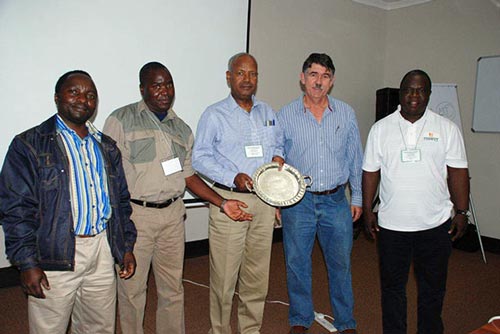 “Private sector players steer away from smallholders viewing them as high risk because of their poor infrastructure, lack of credit, and land tenure, while governments may not view them as a viable investment,” Jenrich summarized the lack of interest in smallholders’ problems. Zaka Superseeds proves them wrong; cooperating with smallholders can, in fact, be beneficial for seed companies, as they can work more closely with the community consuming their seed. Zaka, for example, is removing a product from its selection after consultations with the community during which they found out the discussed maize variety has a long maturity period and is thus undesirable.
“Private sector players steer away from smallholders viewing them as high risk because of their poor infrastructure, lack of credit, and land tenure, while governments may not view them as a viable investment,” Jenrich summarized the lack of interest in smallholders’ problems. Zaka Superseeds proves them wrong; cooperating with smallholders can, in fact, be beneficial for seed companies, as they can work more closely with the community consuming their seed. Zaka, for example, is removing a product from its selection after consultations with the community during which they found out the discussed maize variety has a long maturity period and is thus undesirable.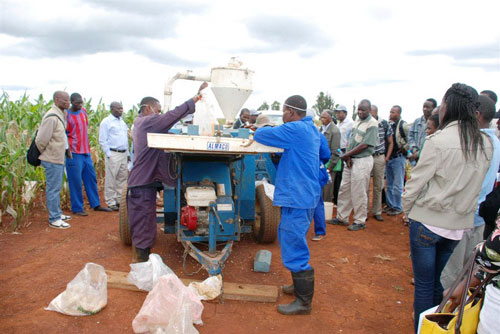 The field day was followed by a feedback session and a technical seminar on the maize lethal necrosis (MLN) disease that has emerged recently in East Africa. During the seminar presented by Magorokosho and MacRobert, principal director of the Department of Agriculture Research Services Danisile Hikwa expressed her appreciation to CIMMYT for its efforts to develop MLN resistant varieties.
The field day was followed by a feedback session and a technical seminar on the maize lethal necrosis (MLN) disease that has emerged recently in East Africa. During the seminar presented by Magorokosho and MacRobert, principal director of the Department of Agriculture Research Services Danisile Hikwa expressed her appreciation to CIMMYT for its efforts to develop MLN resistant varieties.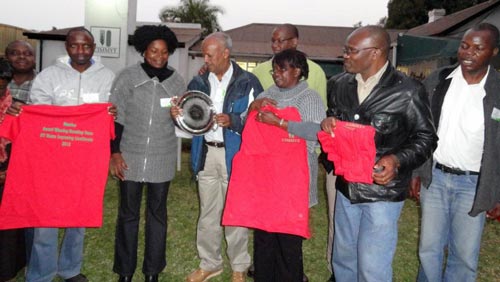 Maize plays a pivotal role in the livelihoods of people in southern Africa: its annual per capita consumption is around 85 kg. In the past season, however, farmers in Angola, Botswana, Lesotho, Swaziland, and much of Zimbabwe experienced a severe drought that significantly reduced their harvests.
Maize plays a pivotal role in the livelihoods of people in southern Africa: its annual per capita consumption is around 85 kg. In the past season, however, farmers in Angola, Botswana, Lesotho, Swaziland, and much of Zimbabwe experienced a severe drought that significantly reduced their harvests. Participants discussed some of their notable achievements from 2011-12. Angola began its first commercial-scale production of the drought tolerant hybrid seed with Agropequária Kambondo and produced significant quantities of the drought tolerant openpollinated variety (OPV) ZM523. Farmers in the Democratic Republic of the Congo produced 80 tons of the drought tolerant OPV ZM623 through community-based seed schemes. Lesotho released a quality protein maize variety, and Zambia’s national program made significant progress in breeding for drought tolerance. Local emerging seed companies in Mozambique have begun production of one drought tolerant OPV and three drought tolerant hybrids.
Participants discussed some of their notable achievements from 2011-12. Angola began its first commercial-scale production of the drought tolerant hybrid seed with Agropequária Kambondo and produced significant quantities of the drought tolerant openpollinated variety (OPV) ZM523. Farmers in the Democratic Republic of the Congo produced 80 tons of the drought tolerant OPV ZM623 through community-based seed schemes. Lesotho released a quality protein maize variety, and Zambia’s national program made significant progress in breeding for drought tolerance. Local emerging seed companies in Mozambique have begun production of one drought tolerant OPV and three drought tolerant hybrids.
 During 25 – 30 June 2012, CRP MAIZE and FAO-Swaziland supported the participation of 32 maize researchers and technicians in a maize training course in Mbabane, Swaziland. The course attracted agricultural researchers and extension staff from the Department of Agricultural Research and Special Services (DARSS), NGOs, and seed companies.
During 25 – 30 June 2012, CRP MAIZE and FAO-Swaziland supported the participation of 32 maize researchers and technicians in a maize training course in Mbabane, Swaziland. The course attracted agricultural researchers and extension staff from the Department of Agricultural Research and Special Services (DARSS), NGOs, and seed companies. 
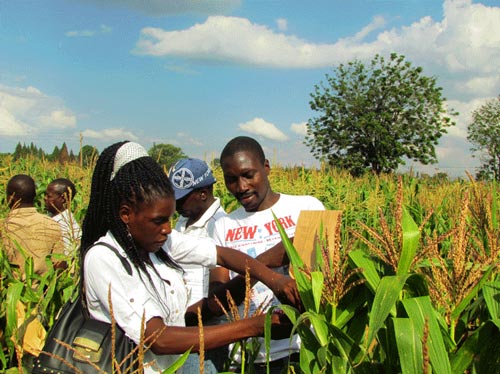 A training course was held at the Agricultural Research Trust (ART), in Harare, Zimbabwe during 12-15 March 2012. Organized by CIMMYT-Zimbabwe, the course aimed to improve the skills and knowledge of maize technicians regarding implementing on-station and on-farm trials, seed production, and the use of secondary traits in selecting superior genotypes under low N and drought trials.
A training course was held at the Agricultural Research Trust (ART), in Harare, Zimbabwe during 12-15 March 2012. Organized by CIMMYT-Zimbabwe, the course aimed to improve the skills and knowledge of maize technicians regarding implementing on-station and on-farm trials, seed production, and the use of secondary traits in selecting superior genotypes under low N and drought trials.